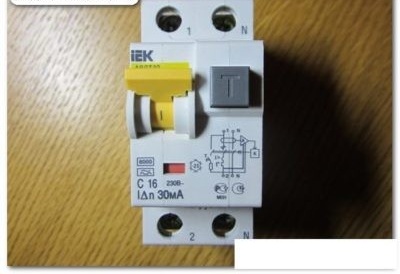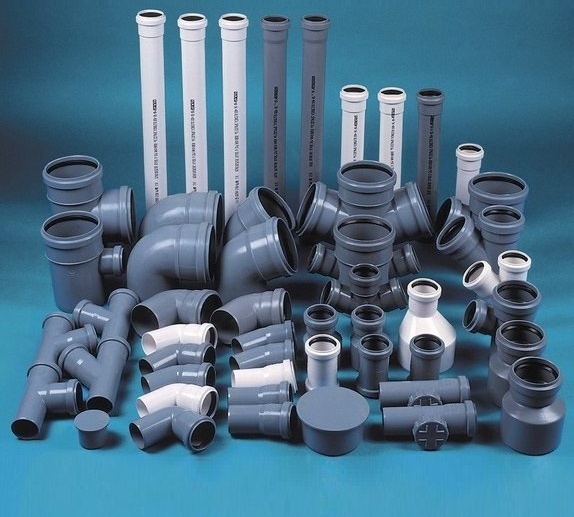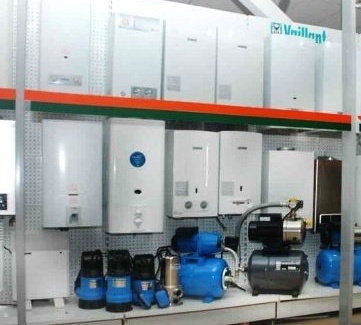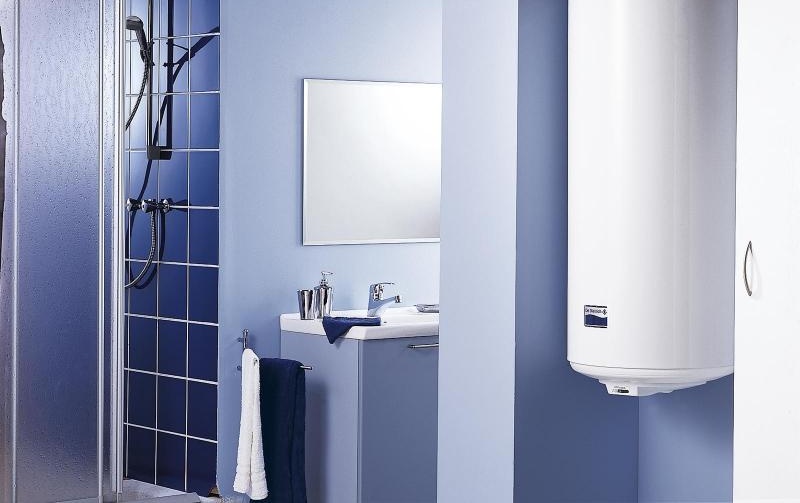How to choose an RCD for an apartment and a private house: analysis of the main characteristics of the device
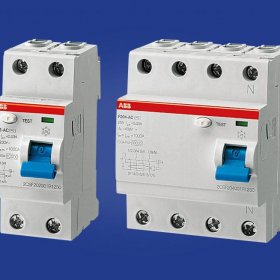
According to the PUE, residential facilities must be connected to the power supply network through a residual current device (RCD). Any electrician will tell you that this device must be chosen very carefully. How exactly to do it and why it is so important - we’ll talk about this now.
Content
Why should an RCD be of high quality and reliable?
High requirements for RCDs will seem quite reasonable if you look at the purpose of this device. He has only one function: to turn off the power supply in the presence of a leakage of current of a certain (threshold) value. A current leak is fraught with not at all harmless economic damage, as it might seem at first glance, but much more serious consequences - it always indicates that one of the following situations takes place:
- a person or animal is affected by electric current;
- due to damage to the insulation, a contact has appeared between the current-carrying element and some grounded metal structure, which can lead to fire;
- the grounded case of any device or equipment turned out to be energized, as a result of which the user touching it risks a shock.
Thus, the user’s life depends on whether the RCD will work at the right time. Therefore, in no case should you save on the quality of this device.
What you need to know about RCD
The main element of the RCD is a differential transformer consisting of three coils. The first is included in the phase, the second in the neutral conductor. In this case, the currents flowing through these coils generate magnetic fields with oppositely directed field lines.
If the currents in the phase and neutral conductors are equal, then the geometric sum of the field lines of force will be equal to zero, that is, they simply destroy each other. If the currents differ, then the residual field will form in the device, which will excite the current in the 3rd coil, and it, in turn, will make the trip relay trip.
Note. The current that makes the RCD trip is called the differential current, respectively, the RCD is also called the differential current switch.
Thus, if we speak in an accessible language, the RCD compares the currents at the input and output of the circuit connected to it, and if the “debit with the credit does not fit,” it blocks the supply of electricity. Two important conclusions can be drawn from this:
- The RCD does not protect against overcurrents (short circuit) or overload, since in such situations the currents at the input and output of the circuit remain equal (no leakage). Thus, this device cannot be considered as an alternative to a fuse or circuit breaker - at least one of these devices must be installed at the entrance to the apartment or house. Instead of separate RCDs and a circuit breaker, you can use the so-called differential machine, in which both of these devices are combined.
- The RCD will not turn off if a person touches a live element and a neutral wire at the same time. In this case, there will be an electric shock, but there will be no leakage - all the current will remain in the circuit.
Therefore, even in the presence of an RCD, one must not lose vigilance: live parts must be protected by covers, potentially dangerous places must be fenced and indicated with warning symbols and inscriptions.
Device specifications
The most important characteristic of an RCD is the differential current setting, that is, the minimum value of the leakage current at which the device disconnects the circuit. Most often it is displayed in milliamperes (mA) and can be 6, 10, 30, 100, 300 and 500 mA. This parameter is also called RCD sensitivity: the lower it is, the more sensitive the switch is.
Another important characteristic is the response time of the device, that is, the length of time between the occurrence of the leak and the disconnection of the RCD. Obviously, this period should be as short as possible, but there are special RCDs that operate with a time delay. They will be described below.
The third parameter is the rated current of the RCD, that is, the maximum current strength that the device can withstand without failure.
Calculation of RCD parameters
When calculating the parameters of the RCD, the manufacturers take into account the following data:
- A current of 50 mA is considered dangerous to humans. Therefore, all RCDs designed to protect against electric shock have a differential current setting of not more than 30 mA. Higher setting switches are fireproof.
- The response time is such that in case of electric shock did not have time to come fibrillation of the heart muscle. Safe in this regard is considered to be a period of 20 to 40 ms.
- Each current corresponds to its own heat dissipation power. For example, with a current leak of 500 mA, 100 watts of heat are released. Based on this, the settings of the differential. current fire RCDs do not exceed 500 mA.
The lower the ignition temperature of the building material of the building, the lower should be the setting of the leakage current of the fire protection RCD.
Criterias of choice
Now let's see how to choose an RCD, depending on the conditions of its operation.
Rated current
According to the rated current, the RCD must be one step higher than the circuit breaker installed in front of it. Thus, after a 16 A circuit breaker, it is necessary to install an RCD with a rated current of 25 A, and after a 40 A circuit breaker - with a rated current of 50 A.
To install an RCD with the same rated current as the machine would be a mistake: the switch trips, although quickly, but still not instantly. So in the event of an overload during the time of its operation, a current above the rated current will pass through the RCD. This time may be quite enough for it to fail.
Differential current (leakage)
Selecting the differential setting. current, you should first take into account the value of the nominal current flowing in the circuit. Here's the thing: if you set too sensitive an RCD to a high current, frequent false positives will occur. Acceptable values of the leakage current setting for rated currents of different sizes are shown in the table:
| Rated current in the protection zone, A | 16 | 25 | 40 | 63 | 80–100 |
| IΔn when working in the protection zone of a single consumer, mA | 10 | 30 | 30 | 30 | 100 |
| IΔn when working in the protection zone of a consumer group, mA | 30 | 30 | 30(100) | 100 | 300 |
| IΔn RCD of fire-fighting purpose at the ASU (VRSH), mA | 300 | 300 | 300 | 300 | 500 |
However, as mentioned above, only RCDs with a leakage current setting of up to 30 mA inclusive can provide protection against electric shock. More precisely, for dry rooms - 30 mA, for rooms with high humidity (these include bathrooms) - 10 mA.
In order to be able to install such RCDs, a network section with a large rated current is divided into several sub-sections (all consumers are divided into several groups) and each of them has its own differential switch. Current with sufficient sensitivity.
We draw the reader’s attention to one exception: in networks with a grounding system of the “TT” type, it is mandatory to install an RCD with a leakage current setting of 30 mA regardless of the rated current.
Note. Imported RCDs with a leakage current setpoint of 6 mA are produced under US standards - according to the requirements of the local standards, the sensitivity of the RCD, which provides protection against electric shock, must be in the range of 4 - 6 mA.
Also, pay attention to the fact that there are RCD models with an adjustable differential setting. Current, and it can be regulated both discretely and smoothly.
Device type
RCDs are divided into several types according to two criteria. The first sign is a type of leakage current:
- Alternating current only: Such RCDs are combined into an “AC” type. This letter designation is applied directly to the case, also the AC icon: “INSERT TILD” indicates the belonging to this type. These switches are the cheapest. Previously, household consumers connected mainly through them, but today RCD type ASs are not suitable for these purposes: they may not respond to leaks in a number of modern devices that use direct current, for example, computers, televisions, VCRs, washing machines, etc. .
- Alternating current and constant pulsating: such RCDs are classified as type “A”, they are also indicated by a special symbol shown in the figure. These devices are more expensive than the previous variety, but today they are the most preferable for connecting household consumers.
- Alternating, pulsating constant and rectified currents: such RCDs are combined in type "B". Through them, you can also connect household networks, but doing this is impractical, since these devices are very expensive. They are intended for connecting industrial electrical installations for the supply of which all varieties of currents are used simultaneously (mixed power).
The second sign is the response time. Conventional RCDs, as has been said, are turned off 20 to 40 ms after a leak. But there are varieties that work with time delay:
- RCD type "C" (selective). The delay is 150 to 500 ms.
- RCD type "G". The delay is 60 to 80 ms.
These "braked" switches are installed to insure the usual. The connection is organized according to a cascade scheme: an RCD is installed on a common line with shutter speed, then the line forks into several groups and a conventional RCD is installed on each of them. If a failure occurs with one of the conventional devices and it does not respond to a leak, after a split second the total RCD will trip.
RCD design
According to their device, differential switches. The currents are divided into two varieties:
- Electromechanical. They consist only of a differential transformer (see above) and a trip relay.
- Electronic. Additionally, they include an electronic amplifier, which amplifies the current arising in the third (control) coil of the differential transformer in the presence of leakage. Having equipped the RCD with an amplifier, the manufacturer gets the opportunity to use a less powerful differential. A transformer, respectively, electronic switches are more compact and less expensive than electromechanical.
It would seem that the choice should definitely be made in favor of electronic RCD. But you should know that not all of them are reliable enough.Here's the thing: the amplifier, like any electrical appliance, needs power and in the absence of such a switch cannot trip. The power, of course, is taken from the serviced circuit, that is, the RCD amplifier is included in it at the very beginning in parallel with other loads.
Imagine now that there was a break in the neutral wire somewhere above the RCD (most often, the conductor disconnects from the neutral bus). The phase integrity was not violated, therefore, all current-carrying elements remained energized, but the circuit was open, which means that all consumers, including the RCD amplifier, are inoperative. That is, the user will not be able to turn on any electrical appliance.
But if he touches, for example, a bare wire or case on which a breakdown has occurred, he will receive an electric shock.
By the way, the likelihood that the user will touch the current-carrying element is quite high: seeing that the device is not working, 9 out of 10 citizens will think that this is due to lack of voltage, and will lose vigilance.
So, in such a situation, when a person is struck by electric shock, the electromechanical RCD will work, but the electronic one will not, because its amplifier will be inoperative due to lack of power. To increase the reliability of electronic RCDs, they began to be equipped with an additional disconnecting mechanism that works when the amplifier’s supply circuit is opened - this is the model to look for.
At the same time, it makes sense to find an option that "can" automatically turn on when power is restored, otherwise the RCD will have to be turned on manually each time after a power outage.
We should also talk about how to recognize which RCD you are holding in your hands. There is no direct indication of its variety in the form of the inscription “electronic” or “electromechanical”, and even sellers often cannot clarify the situation. Here's what you need to do:
- First of all, look at the diagram of the device depicted on itself. Electronic RCDs in its composition should have an amplifier - some kind of icon, to which the power is connected. In the vast majority of cases, the amplifier is indicated by a triangle. On the circuit of the electromechanical RCD, nothing of this kind will be depicted.
- If, due to lack of experience, you are unsure about the correct interpretation of the circuit, pass a current through one of the poles of the RCD, connecting it to a regular battery. Before this, of course, you must remember to put the device in the “on” position. If it turns off, then you have an electromechanical model. If not, reverse the polarity of the battery to pass current in the opposite direction. If this time the switch does not work, then it is definitely electronic.
If there is a permanent magnet, bring it to the front of the RCD and move it slightly. The electromechanical switch will turn off during these manipulations, the electronic one will not.
Manufacturers
Today, manufacturers from Europe and the USA offer the highest quality products. First of all, these are the companies:
- “ABB” (Sweden + Switzerland);
- "Legrand", "Schneider Electric" (France);
- Moeller (a German company, but was recently acquired by the Americans);
- General Electric (USA).
Of course, the RCD of these manufacturers are relatively expensive.
Siemens devices (Germany) are somewhat cheaper, but in terms of quality they are slightly inferior to RCDs from leading companies.
The products of domestic manufacturers can vary greatly, as some plants are owned by foreign investors. So, for example, a plant producing UZO under the brand name “Contactor” is owned by the French company “Legrand”. This determines the quality - it is much higher than that of many other domestic brands, and the price - it is comparable to the cost of UZO European production.
In the middle class settled:
- Kursk plant "KEAZ";
- DEKraft company.
The latter is noteworthy in that there are almost no negative reviews on its products on the network.
But IEK devices, on the contrary, are often scolded. According to users, they buzz even at moderate load and are distinguished by the shakiness of the body, which is easily deformed when tightening the clamping screws. Nevertheless, equipment of the IEK brand is quite popular because it has a very attractive price.
To the same category as the products of the IEK brand can be attributed devices of the well-known Chinese manufacturer EKF Electrotechnica - both in price and in quality. But at the same time, the "Chinese" are distinguished by a rather long warranty period, for example, for circuit breakers it is 5 years. For comparison, the guarantee for similar products of the KEAZ plant is 2 years.
Let us remind the reader once again that the quality of RCDs is often a matter of life and death, therefore it is not worthwhile to buy circuit breakers of dubious and little-known manufacturers for the sake of economy. We should also not forget that the products of well-known brands are actively faked, so it is better to purchase RCDs in large stores that work directly with the manufacturer, or from authorized dealers.
Rated voltage
When choosing an RCD, do not forget to see if it is 1-phase or 3-phase. In the first case, the rated voltage of 230 V will be affixed to the case, in the second - 400 V.
Installation method
It is useful to know that along with stationary RCDs intended for installation in a switchboard on a DIN rail, portable RCDs are produced. They are similar to a conventional extension cord - they are plugged into a power outlet and at the same time they themselves have several outlets for connecting electrical appliances.
It should be borne in mind that, in terms of cost, such switches are significantly superior to stationary models.
Health Check
On all modern RCDs there is a button with the inscription "TEST" (check). When you click on it, current is supplied to a special test wire, as a result of which the RCD, if it is operational, should turn off. But there are two important points to consider:
- Turning off the RCD when the “TEST” button is pressed indicates only the integrity of the internal circuits, but this fact does not guarantee that the characteristics of the device (breaking the leakage current and response time) comply with regulatory requirements. Therefore, do not lose your vigilance and if you purchase an RCD in a small store or in the market, ask for a certificate.
- Similarly, the operation of a switch already installed in place when you press this button does not mean that it is connected correctly. It is likely that by pressing the "TEST" button, the device will turn off and ignore the actual leakage due to an error in the connection.
If you want to test the UZO for proper operation, you need to invite a professional electrician and ask him to perform a test current leak. We specially draw the reader's attention to the fact that this operation should be performed by a specialist.
Operational features: It is recommended to check the RCD once a month using the "TEST ".
Connection of RCDs and circuit breakers
If the consumers in the house or apartment are divided into several groups, each of which is protected by its own circuit breaker, then in order to save money, you can install one RCD for 2 to 3 such groups. Today, it is possible to organize a connection in this way in almost any household network: among modern RCDs with a differential setting. 30 mA current there are models designed for fairly high rated currents - up to 100 A.
Choosing an RCD for a group of machines, one should take into account the rated current of not only the higher-level machine, but also the lower ones. Let us explain with examples.
Example 1
Recall that in general it is recommended to install an RCD with a rated current one step higher than the rated current above the installed machine.But in this case, as you can see, each of the two RCDs does not exceed the rated current, but rather inferior to the input circuit breaker: its rated current is 50 A, while the rated current of each of the RCDs is only 40 A.
However, the switches are diff. current are reliably protected from overload: the total rated current of the machines connected to each of them is only 32 A (2x16 A), which is 20% less than the rated current of an RCD of 40 A.
Example 2
The following scheme is not so reliable:
The rated current of the 1st RCD is 25 A and the input circuit breaker with a rated current of 40 A does not protect it. But overloading this device does not threaten, since the current passing through it cannot exceed 22 A (6 and 16 A machines are connected to the RCD). But the 2nd RCD, designed for a rated current of 40 A, can burn out: it is not protected by the machines connected to it, since their total rated current is 58 A (3x16 + 10), and it is protected end-to-end, so to speak, end-to-end .
If there is an overload, then before the input circuit breaker trips through the RCD No. 2, a current above the rated current will flow, as a result of which it can fail. It is recommended either to install an RCD with a higher rated current (the next step is 50 A), or to protect it with an additional circuit breaker with a rated current one step lower (32 A).
Example 3
But this scheme is clearly incorrect:
Both RCDs with a rated current of 40 A are not protected by either a higher circuit breaker (50 A) or lower ones (the total rated currents are 57 and 48 A).
The best option for connecting an RCD
If there are several RCDs with their own group of machines each, it is very important not to mix wires from different groups. It is better to provide for each group its own zero bus - when all consumers are connected to a common zero bus, false positives of RCDs are possible. The connection with the individual buses is shown in the following diagram. Also shown here is the connection of a selective RCD.
Phase (L) is marked in red, neutral conductor (N) in blue, and ground (PE) in yellow-green.
As you can see, a selective RCD with a leakage current setting of 300 mA (pos. 3) secures RCDs 7 and 14 with a leakage current of 30 mA and simultaneously protects the lighting circuits (circuit breakers pos. 5, 6, 12). Protect the RCD lighting wiring with the differential setting. a current of 30 mA does not make sense, since here the probability of electric shock is almost zero.
It is understood that the differential machine 13 serves a dedicated line designed to connect, for example, a computer or a washing machine, so the neutral conductor from it is laid directly to the load, and not to the zero bus.
Additional zero tires are indicated by pos. 11 and 18. The first group of sockets 2, 3, 4 are connected and from it a wire is laid to the RCD 7; to the second - groups of sockets 5, 6, 7, the bus itself is connected to the RCD 14.
Note that this circuit has the same drawback as that shown in example No. 2: the rated current of the input automaton (item 1) is the same as the RCD of items 7 and 14 - 40 A, while the total rated current The machines connected to each of these RCDs are 3x16 = 48 A. For greater reliability, it would be necessary to install a RCD designed for a higher rated current.
When connecting an RCD to a group of machines, it is quite simple to identify the leakage site. For example, the RCD pos. 7. You need to turn off the machines pos. 8, 9 and 10, then turn on the RCD and turn on the mentioned machines one by one. As soon as the circuit breaker is turned on with a leak, the RCD will immediately turn off.
It depends on whether you have chosen and installed the RCD correctly, if it can save your life in case of an emergency. Therefore, this issue should be approached with full detail. The recommendations set forth in our article will help to avoid mistakes that could become fatal.


